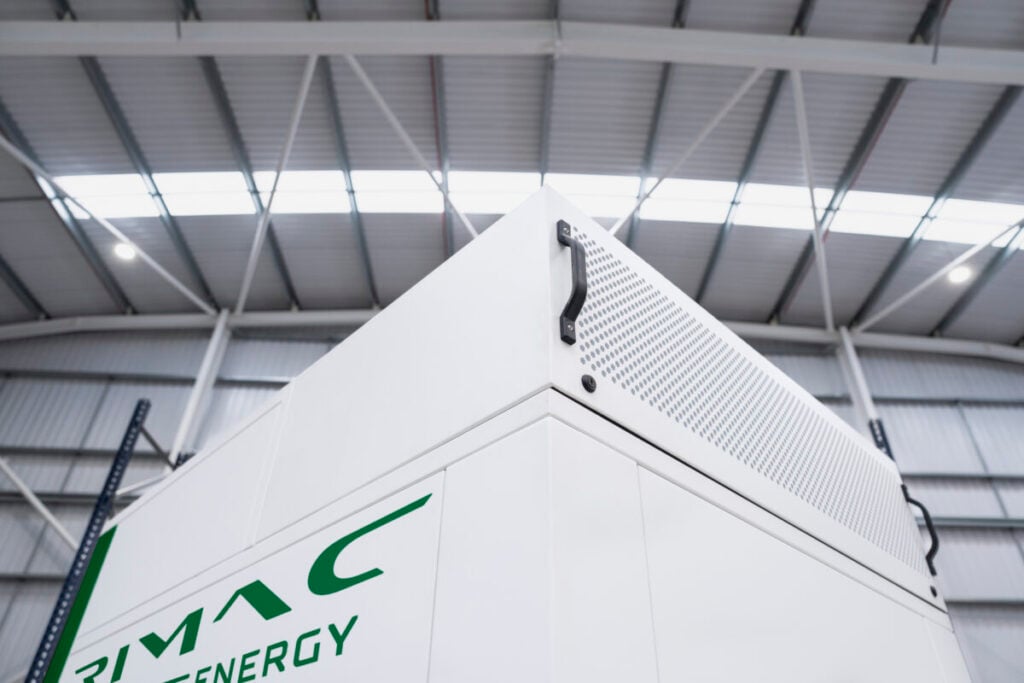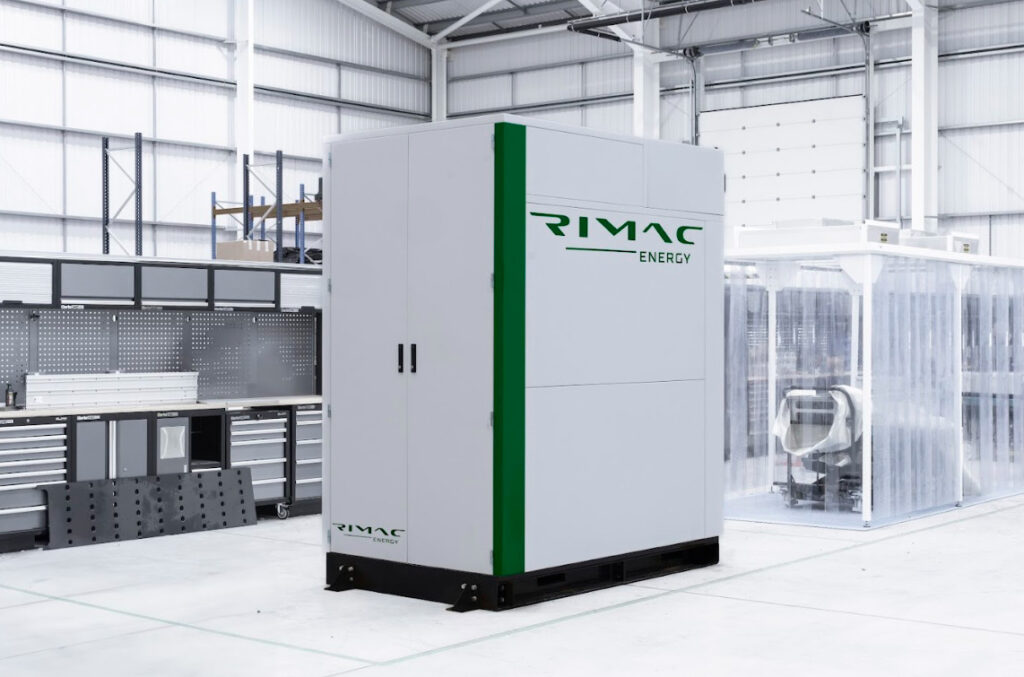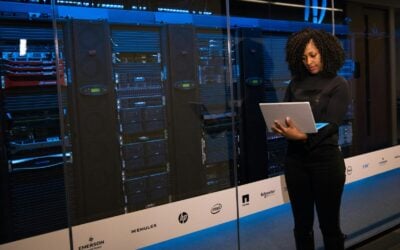
Rimac Energy’s SineStack battery energy storage system (BESS) solution will deliver ‘zero energy capacity fade’ for the first two years of operation, a claim the firm’s director explained to Energy-Storage.news.
The firm has commissioned its first SineStack BESS product for delivery to a site in Colchester, UK, as reported this week by our sister site Solar Power Portal.
SineStack is a lithium iron phosphate (LFP) cell-based modular BESS solution with a useable energy storage capacity of 790kWh, that the firm has claimed is the most advanced BESS in the world thanks to its distributed power conversion system (PCS) architecture.
Rimac Energy, the energy storage arm of Croatia-headquartered automotive technology group Rimac, has now revealed that from next year its SineStack will deliver “zero energy capacity fade during the first two years of operation”.
Try Premium for just $1
- Full premium access for the first month at only $1
- Converts to an annual rate after 30 days unless cancelled
- Cancel anytime during the trial period
Premium Benefits
- Expert industry analysis and interviews
- Digital access to PV Tech Power journal
- Exclusive event discounts
Or get the full Premium subscription right away
Or continue reading this article for free
The move follows on from the world’s largest lithium-ion manufacturer CATL revealing a similar feature for its BESS product Tener in April, promising it for the first five years of operation, which executives then provided further details on to Energy-Storage.news and other journalists in June.
In comments provided to this site, Rimac Energy director Wasim Sarwar Dilov said that its two-year zero capacity fade was based on pre-lithiated technology (the same as CATL’s), combined with its unique PCS architecture.
Rimac does not manufacture its own cells, so the firm worked closely with unnamed cell manufacturers to understand pre-lithiation. Dilov’s statement below, in full, explains how the technology works.
The firm is a sponsor and speaker at of Solar Media’s upcoming Energy Storage Summit Central Eastern Europe (CEE) in Warsaw, Poland, on 24-25 September. Its launch of a modular, bespoke BESS form factor comes at a time when the rest of the grid-scale BESS industry is converging to standardised 20-foot ISO container units.
Wasim Sarwar Dilov
“In our SineStack, we have pioneered the use of a variant of pre-lithiated technology that optimally balances performance, lifespan, and overall system design, enabling zero degradation over two years.
“This approach, combined with our distributed inverter architecture, provides superior system control and optimised operation, supported by our advanced monitoring and prognostic algorithms. Together, these elements enable us to achieve up to 12,000 cycles with higher energy throughput throughout the system’s lifespan.
“Our team of battery specialists has collaborated closely with cell manufacturers over an extended period to gain in-depth knowledge of pre-lithiated technology. This collaboration has been crucial in refining our monitoring and tracking algorithms, allowing us to fully leverage the benefits of pre-lithiation technology. This selected technology uses an iron oxide-based pre-lithiation agent that adds excess lithium ions to the cells, resulting in lower internal resistance, improved energy efficiency, and extended battery life. As the system cycles, the excess lithium ions are gradually consumed, maintaining a zero degradation phase with no loss of active capacity. The standard degradation phase begins only when the system’s capacity falls below the rated level, and the cell retains an attractive degradation curve.

“Degradation in lithium-ion batteries results from complex interactions between physical and chemical mechanisms within cells, leading to capacity and power fade. Our in-depth knowledge of pre-lithiated technology, combined with sophisticated tools and a distributed architecture, allows us to effectively manage various degradation modes and balance the loss of lithium inventory (LLI) with the loss of active material (LAM) in both the cathode and anode, providing greater control over our system’s performance.
“We are confident that integrating this technology will significantly enhance our system’s capabilities and align with our commitment to delivering superior energy solutions, resulting in higher available energy and returns for our customers.”





